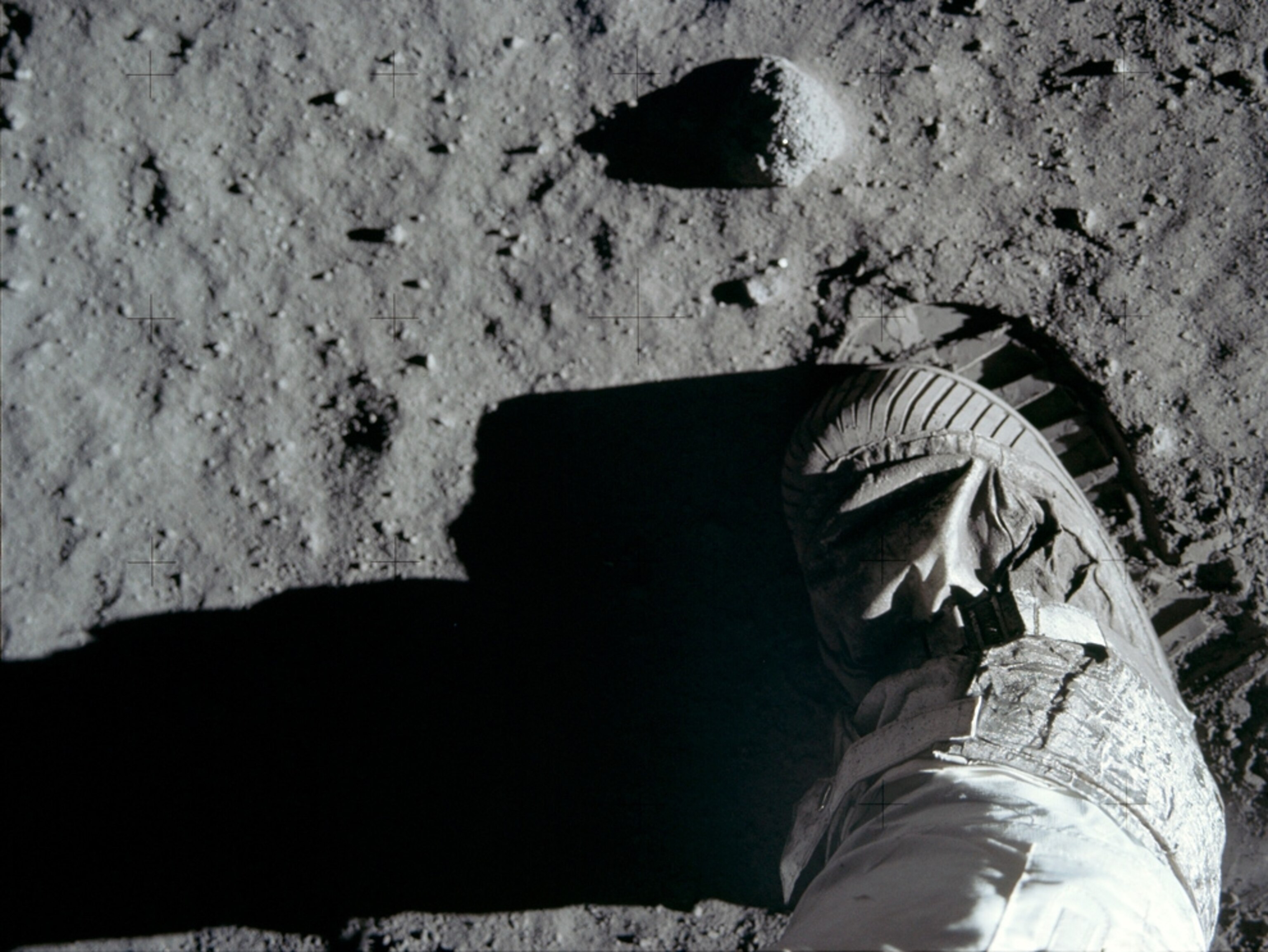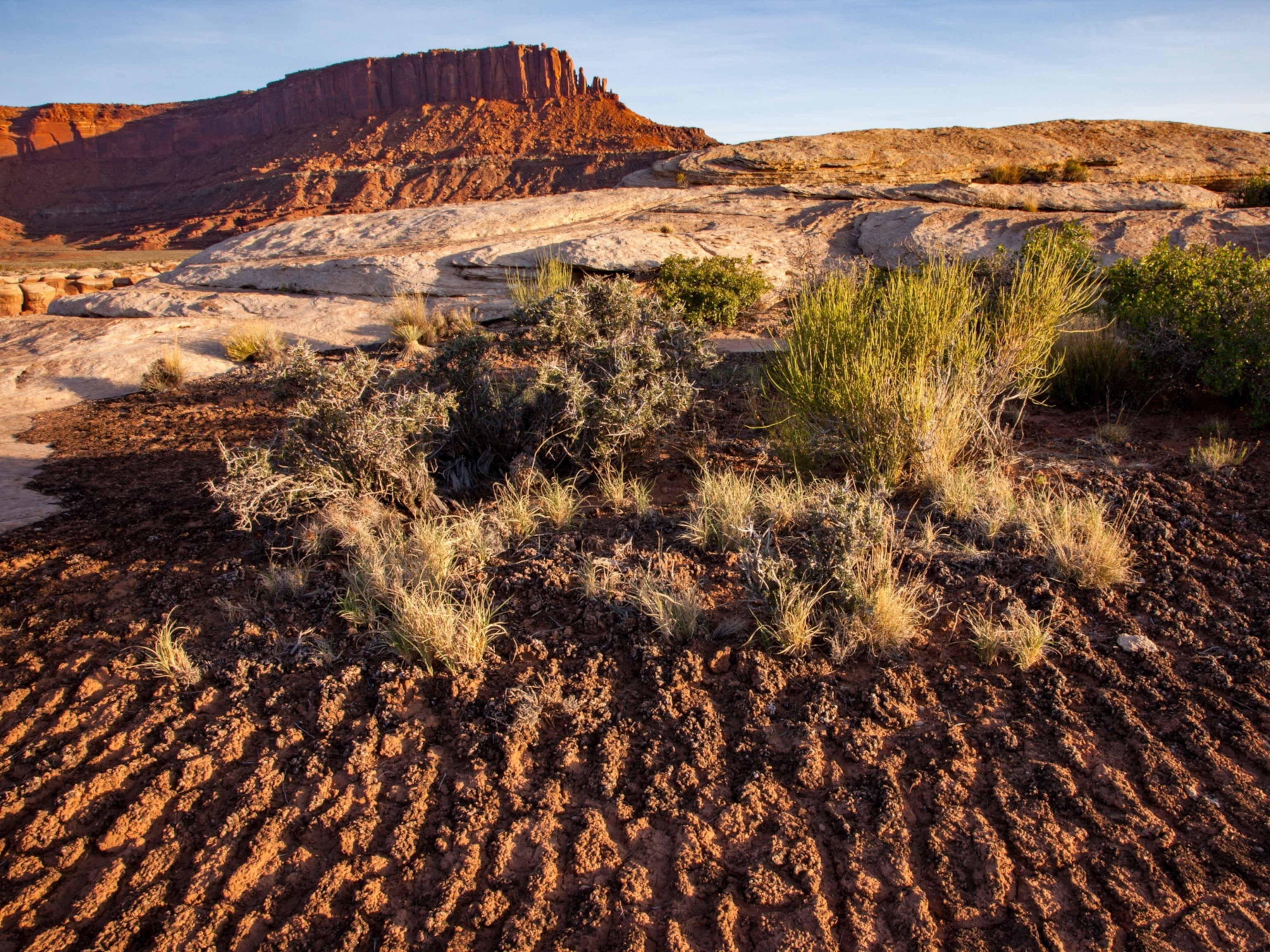
Moon Mystery Solved? Hovering Soil Linked to Glass Bubbles
Nanosize particles may account for soil's odd behaviors, scientist says.
Soil on the moon can hover over the surface, and the temperature six feet (two meters) deep can be more than 300 degrees Fahrenheit (167 degrees Celsius) colder than the topsoil.
Now researchers in Australia think they've solved the puzzle of moon soil's odd behavior: nanosize particles of lunar glass.
Small bubbles of glass form on the moon when micrometeorites hit the lunar surface. (Related: "Moon Oddly Magnetic—Giant Asteroid Crash to Blame?")
Since the moon has no atmosphere to slow the projectiles, each one, no matter how tiny, "wreaks havoc," said Paul Warren, a research geochemist at the University of California, Los Angeles, who wasn't involved in the new study.
Particles about a hundred microns wide—the size of a fine grain of beach sand—hit with enough force to melt bits of moon rock, forming tiny glass bubbles.
In a new study, Marek Zbik of the Queensland University of Technology analyzed glass bubbles collected by Luna 16, the first Soviet probe to return a sample from the moon.
Using a special type of x-ray microscope, Zbik constructed 3-D images of the bubbles' insides.
Instead of containing gas, as bubbles usually do on Earth, the moon bubbles are "filled with a highly porous network of alien-looking glassy particles that span the bubbles' interior," Zbik said in a press statement.
The researcher speculates that ongoing micrometeorite impacts release these nanoparticles, which then mix with the rest of the soil. Because of their size, the particles likely behave according to laws of quantum mechanics, which are very different from the standard rules of physics.
"Nanoparticles are so tiny, it is their size and not what they are made of that accounts for their exceptional properties," Zbik said.
It's still unclear exactly what quantum properties the moon's nanoglass might have.
But considering that nanoparticles in general have been known to affect a substance's electric and conductive properties, it's possible the moon particles can explain how lunar soil develops the electrostatic charge that allows it to hover, or why the soil appears to be an unusually good insulator, Zbik proposes.
(Related: "Legendary Swords' Sharpness, Strength From Nanotubes, Study Says.")
Moon Nanoglass Not Alone
But lunar scientists aren't sure whether glass nanoparticles are the sole sources of this quantum strangeness.
"We have extensive characterization of the lunar soil with every conceivable technique," said Roy Christoffersen, a researcher in the Astromaterials Research and Exploration Sciences directorate at NASA's Johnson Space Center.
For instance, he said, scientists know the average amount of vesicles, or glass bubbles, found in lunar soil. And according to Christoffersen, based on those amounts, there must be plenty of other types of nanoparticles in the lunar soil.
"If you do the math, add up all the constituents of the lunar soil that have vesicles, even if you filled them all with tiny particles and broke them all open, you wouldn't be able to add them up to account for all the [nanoparticles known to be] on the moon," he said.
(Also see "The Moon Has Shrunk, and May Still Be Contracting.")
Also, with only one sample from one place on the moon, it's not clear whether particle-filled glass bubbles are widespread across the lunar surface, Christoffersen said.
UCLA's Warren agrees. While Zbik's images are of "unprecedented high magnification of the interiors of these voids and the delicate structures that form ... I don't know that it's going to change our way of thinking" about the contents of lunar soil.
Fluffy Contaminants?
What's more, Warren cautions, the samples brought back by Soviet missions might not have been stored as cleanly as other moon samples.
(Also see "Water Found in Apollo Moon Rocks.")
"It would not greatly shock me to learn that the fluffy materials documented by Zbik are actually terrestrial contamination products," he said in an email.
"I believe they're probably real lunar materials, but I'm not quite certain. The study ought to be repeated using Apollo samples."
The study of the moon's glass bubbles was published in the current issue of the open-access journal ISRN Astronomy and Astrophysics.





